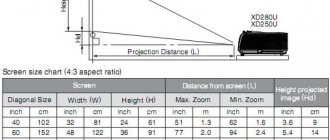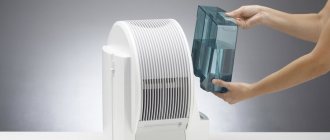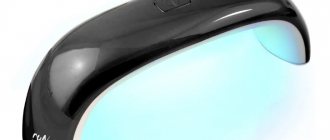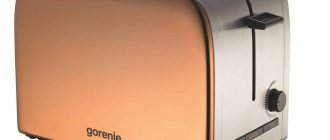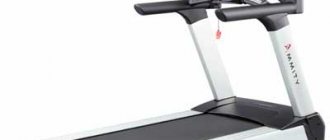Until recently, projectors were used in offices and educational institutions to display slides with graphs and presentations, which was more like watching filmstrips. Now video projectors cope with more non-trivial tasks - watching movies, playing computer games - but do not lose their relevance for work and study. We suggest you figure out which projector is intended for what purposes.
Short review
Video projectors have several classes:
- Pocket, weighing no more than 300 grams. These projectors are multimedia, but with extremely limited functionality;
- Ultraportable. Compact and lightweight. Suitable for work purposes, low quality functionality;
- Portable. Can be used as portable or stationary equipment. Compact but high resolution;
- Stationary. They are low mobile, have high performance, and can often connect several signal sources.
More and more people are choosing stationary video projectors, replacing them with TVs, which also have their advantages. Comparing pocket projectors with TVs, of course, is unreasonable, but if you take into account the average indicators, then an approximate comparative table of advantages and disadvantages looks like this:
| TV | Projector |
| pros | |
| bright | large image size |
| silent | compact, mobile |
| independent of lighting | you can change the image format |
| high contrast | not harmful to eyes |
| Minuses | |
| image format does not change | darkening of the room is required |
| eyes get tired when watching | lamps need replacing |
| expensive models with a large diagonal | requires separate audio equipment |
| noisy | |
Check ease of use and connectivity
Numerous projectors support multiple signal sources. However, you should purchase a projector that has input jacks that are available on all of your input sources that you plan to use (computers, camcorders, players, etc.). If you have several signal sources, then in order to avoid purchasing additional signal splitters and manually switching cables, it is necessary that the number and types of connectors on the projector match the number of sources and types of their connectors. For example, if you have a computer and a media player, and each of them has an HDMI connector, it would be logical to purchase a projector with two HDMI connectors or use a 2x1 HDMI signal splitter so as not to run two HDMI cables to the projector.
The concept of “bring your own device and show” is becoming more common. Some projectors have the ability to wirelessly play video signals from computers, tablets, phones and other mobile devices, and this additional feature of the projector helps realize this concept. Often this function can be activated by connecting a special wireless module to the projector, which is inserted into the projector’s USB port.
Some projector models allow you to play content from USB drives. By inserting a USB flash drive or connecting a hard drive directly to the projector, you can immediately start projecting the graphics or video files contained on it, without using a computer. Starting a projection should be easy for both teachers and students, so choose a projector that you can simply connect to and quickly start showing the materials you need.
Main characteristics
Matrix type
- LCD. Mainly three LCD matrices are used. The image is stable, realistic, rich, but the contrast is low and there may be a “chicken-mesh” feel.
- DLP. Projectors are reliable and durable. The matrix consists of rotating micromirrors. The contrast of the picture is high, deep shadows and blacks. The downside is that the image may flicker.
- LCoS. A silicon LCD matrix with a mirror surface underneath. High definition image, contrast, high-quality color rendition. Equipment of this type is expensive, mainly produced using two technologies: SXRD (Sony company) and D-ILA (JVC company).
- CRT. The image is high quality, deep black color, low luminous flux. The devices are durable, but heavy, expensive and difficult to install.
- Laser Scan. Used in small portable projectors. The image remains in focus, regardless of the distance to the projected surface or its unevenness.
Permission
The detail and quality of the picture depends on the resolution; the higher it is, the better the image. The resolution of the video projector must match the resolution of the device from which the broadcast is intended.
On average, a resolution of 1024x768 is sufficient for working with presentations, 1280x720 for HDTV movies, and 1920x1080 for watching videos in Full HD quality.
Brightness
The aperture number of the video projector is responsible for the brightness of playback. The lower it is, the brighter the image on the screen.
Contrast
With high contrast, shades and midtones are better conveyed, and dark images and videos are reproduced well.
Luminous flux power
The luminous flux power depends on the quality and quantity of lamps; in a single-lamp projector it ranges from 1000 to 3000 lumens. The worse the room is darkened, the more lumens will be required.
Focal and throw distance
The shorter the focal length, the wider the viewing angle.
The projection distance from the lens to the screen is the distance at which the image remains bright. But this parameter is strongly influenced by external lighting conditions, so this characteristic is conditional.
Noise level
Comfortable noise level for a video projector is 25-45 dB.
Weight
The weight of the device depends on its class. For example, portable projectors weigh from 2 to 4 kg, and stationary ones weigh more than 4 kg.
What resolution should the projector have?
Nowadays, the most affordable and therefore in demand are projectors with a resolution of 1280x800 pixels (WXGA) and a screen aspect ratio of 16:10. More expensive projectors have a resolution of 1920x1200 pixels (WUXGA), on them images, text and small details look much better and clearer. High resolution can be critical when choosing a projector for high-quality display of text, tables, detailed graphs, drawings, models or medical research results, so that not a single detail in the image disappears from view. In this case, it would be a good idea to take into account the resolution of your device from which you will be sending a signal to the video projector.
Features of projectors for school
Projectors for educational institutions and offices are usually designed to work with static images and presentations. The main characteristic is the power of the luminous flux. Since classrooms are poorly dimmed, you will need a projector with at least 2,000 lumens. The projector format must be suitable for computer resolution with a 4:3 ratio. Among the specific features: support for interactive modes - a pointer, gestures, finger touches are used, as when working with a touch screen.
Define the screen format
We've seen that screen height is critical. Another important parameter is the screen format, i.e. the ratio of the screen width to its height. The 4:3 format, which is gradually becoming a thing of the past, has been replaced by the 16:10 format, which is a logical development of the popular 16:9 format, but at the same time 11% larger.
Many modern laptop models have exactly this screen aspect ratio. Most Word® documents, PDF files, and websites are designed in "portrait" format: the long side is vertical. Since 16:10 is taller than 16:9, it fits better. Again, you'll see 11% more information than 16:9.
Rating of the best projector manufacturers
Each brand in our rating has a large selection of high-quality video projectors. Choose a model that meets your individual requirements, we will consider the best models according to customers.
BenQ
- Price
- from 19,148 rubles. - Type
- DLP - Country of origin
: China
BenQ produces ultraportable, portable and stationary devices. The cost of some large-format stationary models exceeds 1.5 million rubles. The BenQ W1720 with a price of about 80,000 rubles is popular; let’s look at its pros and cons.
benq projectors
| pros | Minuses |
| high quality image | no built-in media player |
| good color rendition | low brightness |
| HDR emulation | a little noisy |
| not heavy | gray pixel frame |
| good quality built-in sound | |
| easy to install | |
| color calibration passport | |
| 4K HDR |
Acer
- Price
- from 16,180 rubles. - Type
- DLP - Country of origin
: China
The Taiwanese company Acer is known for its computer equipment and electronics; it produces video projectors for offices and home theaters costing up to 700 thousand rubles. Among the models there are all classes of devices - from pocket to stationary, the best of which, according to buyers, is the portable widescreen Acer X138WH.
acer projectors
| pros | Minuses |
| screen diagonal up to 300“ | Dead pixels appear over time |
| high brightness | Lamp warranty - 1 year |
| easy to use | a bit noisy |
| 2 year warranty | |
| 3D support |
Epson
- Price
- from 22,840 rubles. - Type
- LCD - Country of origin
: Philippines
The Japanese company of the diversified concern Seiko Group produces all classes of projectors, except interactive ones, as well as pocket ones. The most expensive device is the Epson EB-L1710S, its cost reaches 1.5 million rubles, while buyers recommend the Epson EH-TW5400 model, the average price of which is 50,000 rubles.
epson projectors
| pros | Minuses |
| saturated color | high noise level |
| clear and deep picture | low contrast |
| 3LCD technology | weak native speaker |
| high color rendering | |
| eco mode | |
| convenient control |
Ricon
- Price
- from 20,779 rubles. - Type
- DLP, LCD - Country of origin
: China
A brand from Japan, founded in 1936, produces media projectors for offices and concert halls. The inexpensive Ricon PJ X2440 with a luminous flux of 3000 lumens is popular.
ricon projectors
| pros | Minuses |
| inexpensive | heats up quickly, cools down for a long time |
| compact | |
| built-in speakers d | |
| auto shutdown timer | |
| good image quality even in a bright room | |
| easy focusing |
Xiaomi
- Price
- from 49,900 rubles. - Type
- DLP - Country of origin
: China
Xiaomi multimedia devices are presented in all classes except pocket ones. The most popular stationary wide-format model is Xiaomi Mijia Laser Projection MJJ GYY02FM with an average cost of about 90,000 rubles, the luminous flux of which is 5000 lm.
xiaomi projectors
| pros | Minuses |
| high quality plastic | there are versions without Russification |
| bright contrast image | noisy |
| remote control | |
| good sound | |
| design |
Ledunix
- Price
- from 3,970 rub. - Type
- LCD, 3LCD, DLP - Country of origin
: South Korea, China
The Russian company Ledunix is engaged in the production/sales of LED video projectors and their components. Product prices are inexpensive; menu, instructions in Russian. The manufacturer claims a service life of up to 50,000 hours. Ledunix LED-PRO 60 is the brand’s most popular model.
ledunix projectors
| pros | Minuses |
| inexpensive | Full blackout required |
| high quality clear image | |
| low noise level | |
| remote control | |
| doesn't overheat |
Sony
- Price
- from 26,120 rubles. - Type
– DLP, LCD, SXRD - Country of origin
: Japan, China
The range of Sony brand video projectors includes all types and classes of devices, except interactive ones. The price for the most expensive model reaches two million rubles. The most in demand is the Sony VPL-HW45ES - a stationary wide-format projector with Full HD resolution, a light flux of 1800 lm, and an average cost of 130 thousand rubles.
sony projectors
| pros | Minuses |
| low noise level | no trapezoid adjustment |
| color rendering | long focal length |
| contrast | dark room required |
| image smoothing | large-sized |
LG
- Price
- from 30,488 rubles. - Type
- DLP - Country of origin
: China
LG presents portable, ultraportable, stationary video projectors for offices and home theaters with Full HD resolution, the cost of which does not exceed 200 thousand rubles. The LG PF1500G projector is loved by users for its picture quality and is the most popular model with a price of about 60 thousand rubles.
lg projectors
| pros | Minuses |
| low noise level | insufficient brightness in economy mode |
| good sound | weak optics |
| compact | The built-in player does not play all codecs and subtitles |
| good image quality | |
| long lamp life |
Toshiba
- Price
- from 18,490 rubles. - Type
- DLP - Country of origin
: China
At the moment, Toshiba markets only portable, stationary office video projectors with a luminous flux of 2000 lm. Maximum resolution 1024x768. The TDP-S35 model is the most common among Toshiba media projectors.
toshiba projectors
| pros | Minuses |
| easy | gets very hot |
| mobile | manual setting |
| works smoothly | freezes after years of use |
| many input connectors | |
| speaker |
